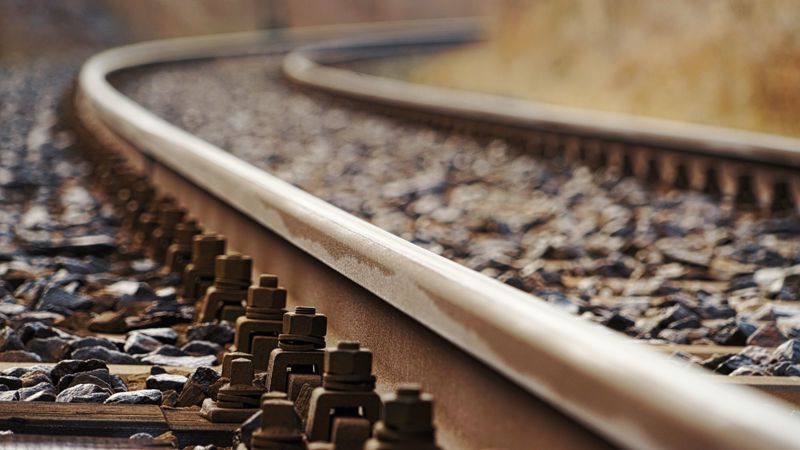
The Office of Rail and Road has launched PR23, the latest periodic review of Network Rail. But decarbonisation appears to be low on the agenda. What does this mean for the UK’s net-zero rail ambitions? And what must be done to keep decarbonisation on track?
Rail and net zero in the UK
The government’s transport decarbonisation plan sets out a vision for a greener, faster and more efficient system. The plan envisages a net-zero railway by 2050.
As a low-carbon form of transport, rail already plays an important role in decarbonisation more generally. It accounts for 10% of total journeys but just 1.4% of transport emissions.
In order to deliver against net zero ambitions, Network Rail and its soon-to-be successor, Great British Rail (GBR), must work out how to encourage people to switch to rail.
No single rail organisation can deliver these ambitions. Instead, different parts of the sector will need to work together to deliver a suite of organisational, technological and policy changes, in a coordinated manner.
PR23 is one piece of this puzzle.
The role of PR23
PR23, overseen by the Office for Rail and Road (ORR), is the price control that will set what Network Rail/GBR must deliver, and what it can charge, for the five years from 2024 to 2029.
It will challenge Network Rail to improve customer experience and enable ‘modal shift’ –customers and freight switching to rail from other forms of transport.
But PR23 will not decide funding for large infrastructure investments, like electrification, and nor does it decide on new transport links, which fall under the remit of the Department for Transport. So the ORR’s review can only have so much impact.
Coordination is key – but so far lacking
In addition to PR23, the rail sector is also preparing the Sustainable Rail Strategy (SRS). This is led by the Rail Safety and Standards Board. And the GBR Transition Team recently concluded its call for evidence on its Whole Industry Strategic Plan (WISP).
So there are many plans in play. But it’s not yet clear how they will all interface. And while the WISP includes an objective to deliver environmental sustainability, none of the four objectives listed in the ORR’s open letter to launch PR23 directly reference decarbonisation (although a more detailed document does discuss environmental issues).
What might successful coordination look like? The SRS and WISP could lay out the main environmental milestones facing the rail industry between now and 2050. These could then be mapped to specific outcomes, and the outputs that would lead to them, including outcomes where PR23 has a leading role to play.
This could then be used as a benchmark for assessing Network Rail’s net zero plans as part of PR23.
What is reasonable to expect from Network Rail?
A core regulatory principle is that companies should be incentivised on what they can control. So Network Rail and the ORR will need to be clear on the where the former can have an impact.
Network Rail’s scope 1 and 2 emissions are directly under its control; Scope 1 emissions refers to direct emissions from sources owned by Network Rail and scope 2 emissions refers to indirect emissions from electricity, heat or cooling that Network Rail buys. The majority come from electricity for use of Network Rail’s infrastructure and fuel use for its road fleet. Network Rail has developed a plan to cut these emissions, so PR23 must ensure this plan is optimal for customers.
The bigger questions (as with other transport infrastructure providers like airports) relate to Network Rail’s scope 3 emissions, which make up 97% of its carbon footprint.
Two-thirds of these are ‘embodied’ – arising from the manufacture, transport, maintenance, and disposal of purchased goods and services. PR23 could act to incentivise Network Rail to cut these emissions, particularly in areas where it has purchasing power over its supply chain.
Most of Network Rail’s remaining scope 3 emissions are produced by the train operating companies that use its network. These are more difficult to influence as part of PR23.
But while Network Rail can’t directly control the fuel used by trains, PR23 could structure their charges to incentivise greener solutions. This is being explored in other transport sectors, for example, the government is currently discussing options to differentiate airport landing fees and slot allocations in order to reward airline operators who decarbonise.
Overall, the ORR must challenge Network Rail to show it has considered all the levers at its disposal to influence downstream carbon emissions.
The importance of modal shift
Finally, the role of rail in net zero goes beyond its own emissions. Decarbonisation of transport will rely on a degree of modal shift. Network Rail has a key role to play (and GBR even more so) in encouraging this, by improving the customer experience and removing barriers to rail travel.
Customer behaviour will be influenced by several other factors, so setting explicit targets on modal shift risks penalising Network Rail for factors outside its control. But given the importance of rail, PR23 must ensure that Network Rail is able to invest in initiatives that facilitate change.
The next decade is vital
Given the long lead times in changing rail assets, it is disappointing that the legislative consultation on the creation of GBR makes little reference to decarbonisation. If net-zero rail is to be achieved by 2050, the next decade will be vital.
A coordinated approach is required. The WISP and SRS should introduce a sector-wide approach to decarbonisation, and should PR23 should ensure that Network Rail can deliver the outcomes needed in CP7 to put the rail industry on that path while also ensuring that modal shift is at the centre of the discussions. Otherwise, PR23 could be a missed opportunity.









